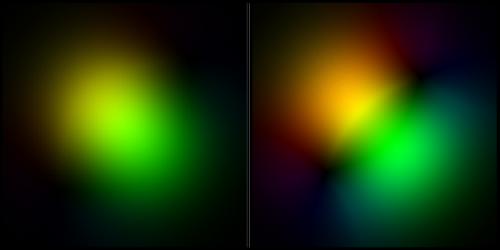Delay Detected in Photon Generation
In quantum optics, scientists typically create entangled photons using so-called spontaneous parametric down-conversion. In this process, individual photons are converted into pairs of entangled photons when light is shone at a specially designed crystal. Now Guillaume Thekkadath at the National Research Council of Canada and his colleagues have identified a delay between the detection times of each entangled photon that depends on the intensity of the light hitting the crystal [1]. This finding could affect the design of quantum computers and quantum sensors because these technologies often require precisely timed photons.
The researchers uncovered the time delay theoretically. They analyzed spontaneous parametric down-conversion using perturbation theory beyond the typically considered first order. They then developed a numerical model of the photon-generation process that they have made publicly available for other scientists. Lastly, they verified their predictions experimentally by building a setup in which the detection times were precisely measured using interferometry.
The researchers found that, for low-intensity input light, the initial photon travels halfway through the crystal, on average, before being converted into an entangled pair. Because of their different wavelengths and polarizations, each photon in this pair propagates at different speeds through the rest of the crystal, leading to a relatively long delay between their detection times. By comparison, for high-intensity input light, the initial photon typically penetrates to nearer the end of the crystal. The photons in each pair have a smaller distance to travel through the crystal, resulting in a shorter delay. The researchers say that, although this delay can be compensated for in large-scale optical setups, it poses complications for on-chip systems.
–Ryan Wilkinson
Ryan Wilkinson is a Corresponding Editor for Physics Magazine based in Durham, UK.
References
- G. Thekkadath et al., “Gain-induced group delay in spontaneous parametric down-conversion,” Phys. Rev. Lett. 133, 203601 (2024).




